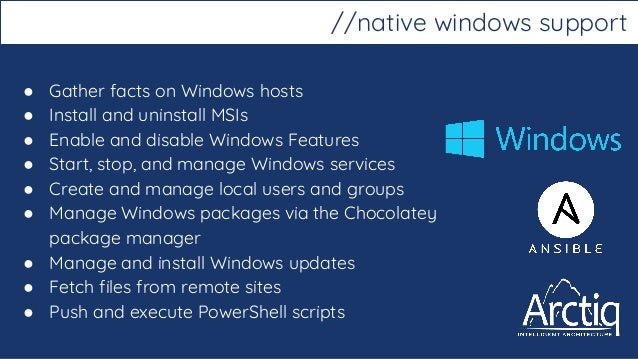Powershell Script To Run Windows Update Remotely Control
- 7 Comments!

By default, PowerShell has scripting support disabled. If you try and run a PowerShell script, you will be greeted with an error stating that the execution of scripts. Command-line automation can greatly improve your Windows patching process. Learn how to install WSUS updates immediately with this PowerShell script and reclaim some.
Powershell Script To Run Windows Update Remotely Control Ipad
Check when servers were last patched with Windows Update via COM or WSUSYou might find yourself wanting a report of when servers or workstations in a certain OU, or the entire Active Directory, were last patched. Here you will find a script using WSUS and one querying online servers or workstations with COM.
- Deploy and manage backup to Azure for Windows Server/Windows Client using PowerShell.
- You might find yourself wanting a report of when servers or workstations in a certain OU, or the entire Active Directory, were last patched. Here you will find a.
- By default, PowerShell will send the script immediately to all computers if 32 or fewer computer names are passed. If more than 32 computer names are passed.
- Articles in the "Programmatically Run Windows Update" series. Programmatically run Windows Update (as part of a broader patch and reboot process)
Both remote COM and local COM via Power. Shell remoting are supported, and there's an asynchronous version using Power.
Shell runspaces. You might want to silence or redirect errors if running it against servers where WMI might fail. To silence, you can use - Error. Action Silently. Continue, but then you won't see the ones that fail.
If you use . You can write something more elaborate, use try/catch, etc., but I personally won't bother since it's not useful to me right now. The dates were incorrect compared to what my COM script reported, which I knew to be correct. Four out of 2. 4 test servers reported correct dates; all the others had the wrong date.

Some had dates going years back, some a few months back. Maybe I'm doing something wrong, but it doesn't seem too obvious at first glance. This is a mixed environment with Server 2. R2, 2. 00. 8 and 2. R2. Errors cannot consistently be tied to one specific of the OSs mentioned. There appears to be no property to retrieve the date when it was actually installed - from WSUS - only when it arrived, combined with the fact that it indeed is installed.
Together they serve as a decent indicator in most cases, I would think. I'm not entirely satisfied with this solution, but it will have to do for now. I have verified that the date for arrival and installation indeed can be different for the last update. Office 2007 Student Phone Activation Keygen For Mac on this page. WSUS seems sort of clunky to deal with. It's also a major flaw that you can't get reports of which computers are missing a certain update from the GUI utility.
Maybe a bunch of wrapper functions / cmdlets would be a good idea. I didn't find too much WSUS stuff at the Microsoft script center the last time I looked. The data is sorted on arrival date with the oldest first, then on computer/host name if the date is the same. There is an asynchronous version as well as a . It produces both HTML and CSV reports. The CSV reports can easily be imported in Excel.
It will overwrite existing report files without prompting. See this article for how to get computer names from an OU in AD or the entire AD. Among other things, you need the . I searched the web for a while and found various information, but something has happened in the lab so I am currently unable to make it work there although I got the SCOM agent push to work. If I disable the Windows firewall, it starts working immediately. Power. Shell remoting, however, works in the lab.
A list of target computer names. See this article for various ways of retrieving computers from specific OUs or the entire Active Directory. Use Power. Shell remoting and local COM via this remoting rather than remote COM.
Easier to get working through firewalls, but requires that you have set up Power. Shell remoting in the domain via GPO, or have enabled PSRemoting manually on target servers. Only in the asynchronous version.
Number of concurrent jobs (actually runspaces). Only in the asynchronous version.
Try to properly close the runspace pool. Sometimes this operation can hang, so I made the behaviour optional and non- default.
Dates are sorted in descending order, unlike the WSUS script. I guess I couldn't decide what's more useful, so it's inconsistent. Add the - PSRemoting flag to use Power.
Shell remoting and local COM via the PS remoting. The default is remote COM. You can expect about 1- 2 minutes processing time per 1.
It has a - Num. Jobs parameter that's set to 5 by default. About 1. 0 or 2. 0 jobs seem to be good numbers also. It's a lot faster than the completely serial version. Important bug fixes.
Some errors were incorrectly reported as successful, and rendered the date sorting useless. This should be fixed. Should only have been in effect with the - PSRemoting parameter. Asynchronous Version Screenshot.
Source Code. param(. Computer = 'Error: No ping reply'.
Later it is assumed that an array type indicates success. Win update search query failed: $($Error. Computer = . Computer = . Computer = $Result. Computer = New- Object PSObject - Property @.
Computer = New- Object PSObject - Property @. Computer = . Win update search query failed: $($Error.